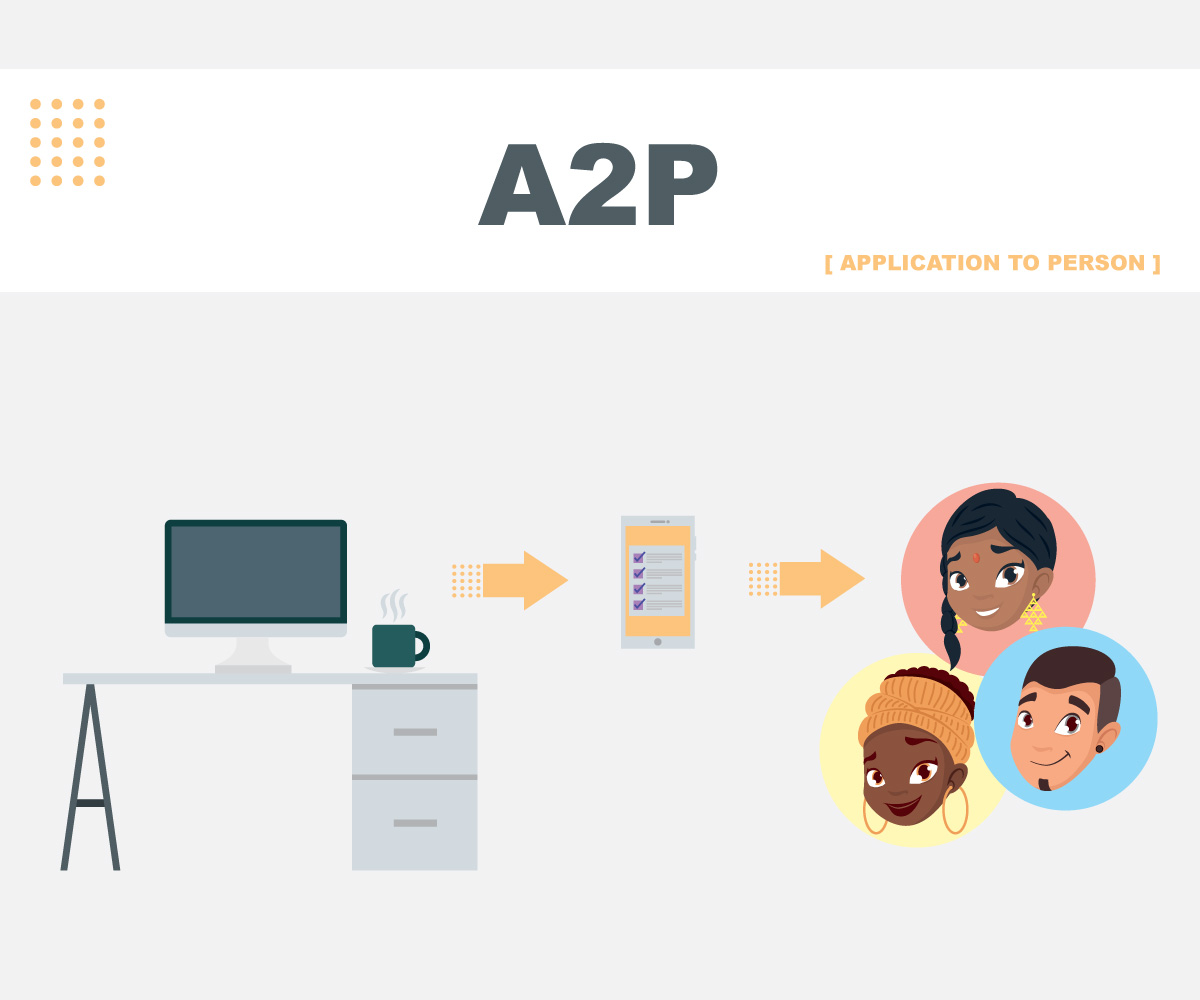Application to Person (A2P) Explained
A2P is an abbreviation for “Application-to-Person.” With Application-to-Person voice calls, you can record and send a message through a voice call to multiple people at once, whether they have landlines or mobile phones. A2P calling is an innovative way to communicate with a large number of people in a short amount of time. With this completely automated process, all you need is a pre-recorded message and contact list.
Voice calls are an excellent way to promote your products or services, allowing you to communicate your message creatively and innovatively. Voice calls are extremely versatile. They can be used for various purposes, including call blasts, follow-ups, reminders, feedback, and event-based calls.
But this is not the only use case of A2P calling.
A2P Calling for User Verification
The A2P Voice segment is constantly being propelled by the persistent enterprise world, always looking for new customer verification methods. For example, recent history saw the birth of flash calls (A2P Voice). This was a new move powered by OTT players such as WhatsApp and Telegram, who started to use missed calls as 2FA. Because flash calls have much lower costs and are easy to use for customers, they are expected to become extremely popular worldwide. In fact, they have already begun gaining momentum in some regions.
A2P SMS
Two-factor authentication, also known as 2FA, is a key use case for A2P SMS. SMS has become the ‘go-to’ channel for authentication due to its widespread availability (no smartphone, mobile data, or internet connection required). However, it isn’t flawless.
SMS was never intended to be a two-way communications. Thus, it has several inherent security flaws that may be exploited if individuals are not careful. As a result, there’s been a search for something different with the same characteristics of SMS (but perhaps more secure) and something that produces practically no friction in the customer experience. Flash Calling is one option.
BOOK A CALL WITH OUR TEAM
Flash Calling Will Have a Disruptive Impact
Flash calling is the method by which a phone call authenticates users’ profiles. It makes use of telephone numbers to identify consumers for businesses and organizations. The authentication process using Flash is simple, and in many situations, the subscriber need not do anything manually.
Unlike most 2FA systems that ask people to input a code sent via SMS manually, the process uses some of the digits from the incoming call number as the passcode. This happens programmatically using an API, so customers don’t have to do anything. And they are informed almost immediately that the verification process is complete.
Flash calling has a disruptive impact as brands and businesses strive to cut costs in their authentication processes. By 2025, it is estimated that there will be 128 billion flash calls globally per year, which is 25 times more than the current number of flash calls.
Because flash calls replace the need to send an OTP by SMS, many worry about a decline in telecom revenues. They are partially countered by organizations sending A2P SMS messages (which customers use as a second authentication factor).
Recently, Whatsapp transitioned from SMS to flash calls as the primary means to authenticate users. This method is free for Whatsapp and provides a better experience for the customer, who no longer has to type in a code received via SMS. The application installed on the phone can simply scan call logs to determine if there’s a match with the expected A-number.
The disadvantage to the user is that they have to allow it access to their phone’s call log, which infringes on their privacy. Flash calling, on the other hand, allows for authentication without requiring the user to respond in any way. This makes it quicker and less intrusive than sending an OTP by SMS. The user’s privacy is also not compromised as the program does not need access to any logs.
Other companies investigating or deploying flash call solutions include Google, Uber, Telegram, Signal, and Twitter. These companies have different reasons for wanting to use this method over SMS, but the main one is cost.
Conclusion
A2P SMS is essential to the mobile ecosystem, and it’s here to stay. However, with the advent of A2P calling (flash calling), we may see a shift in how A2P SMS is used. It remains to be seen how widespread flash calling will become, but it is undoubtedly an exciting development in the world of authentication.
Contact us today to learn more or to speak with one of our experts about how to incorporate voice and messaging into your existing application. If you already use a CPaaS provider like Twilio, Plivo or Telynx, ask us how you can save up to 50% off your monthly CPaaS bill.
BOOK A CALL WITH OUR TEAM

